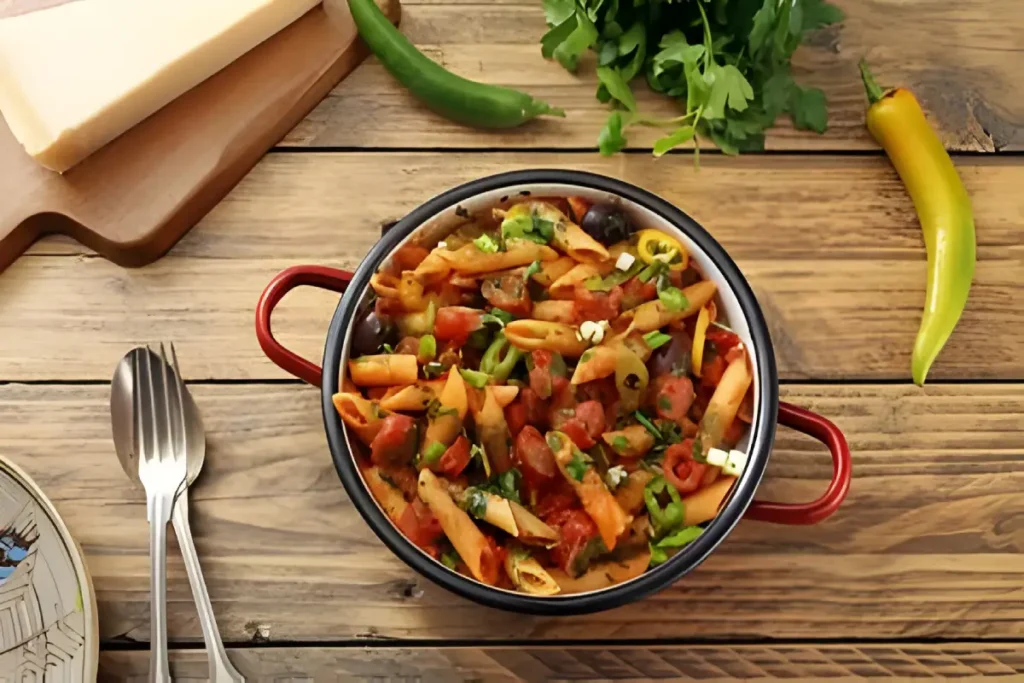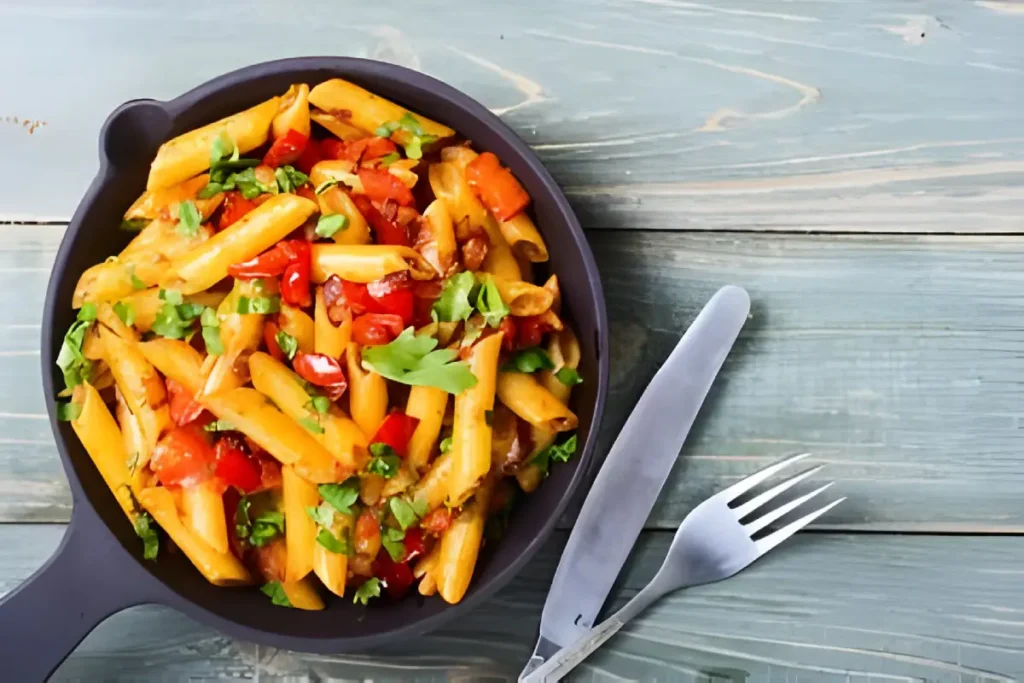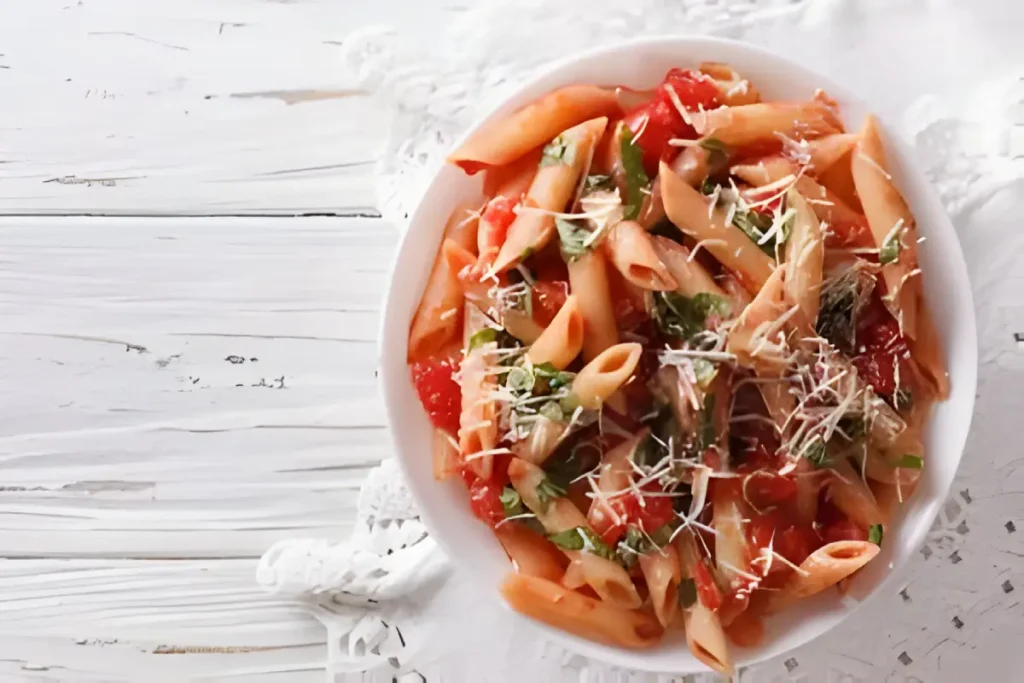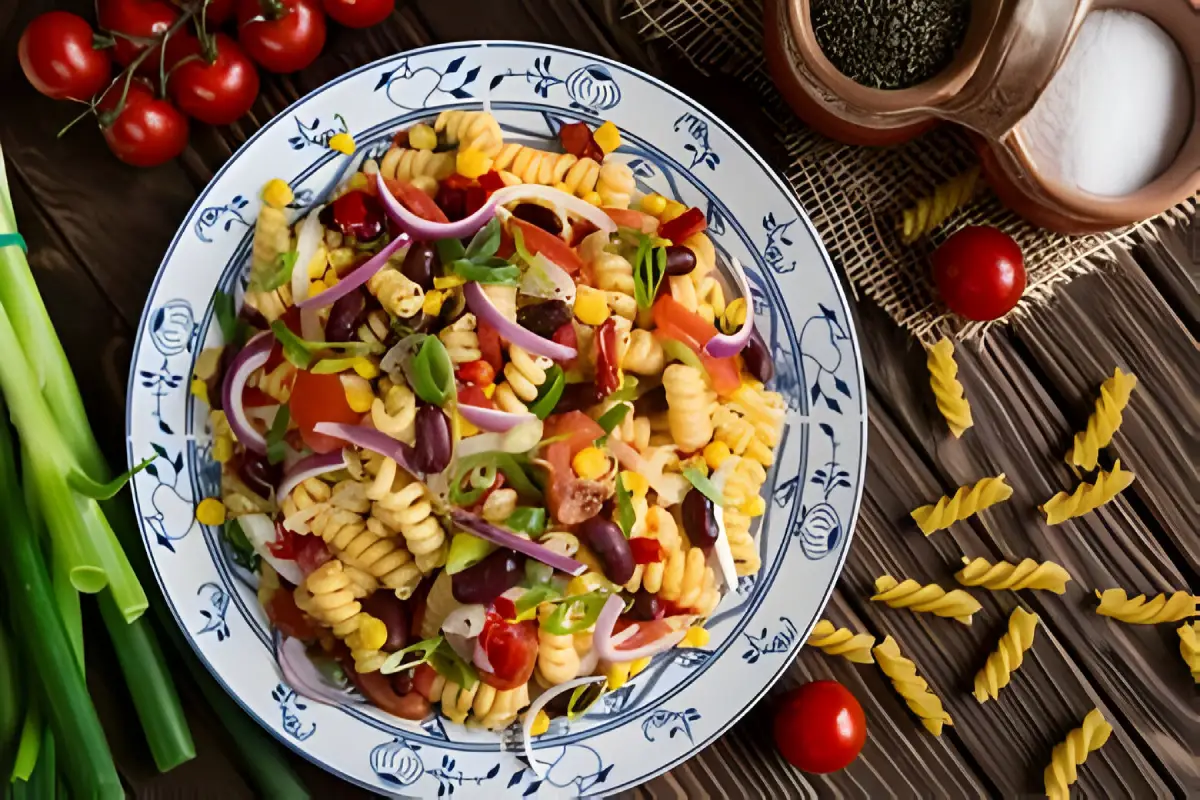Embarking on a culinary adventure, we delve into the savory world of Mexican pasta, a gem in the vast treasure trove of Mexican cuisine. Far from the ubiquitous strands of spaghetti or the comforting embrace of penne, Mexican pasta introduces a symphony of flavors, textures, and traditions that echo through the bustling streets of Mexico to the quietest of family kitchens. This journey uncovers the roots, the twists, the cultural tapestry, and the modern interpretations of Mexican pasta dishes. From the hearty sopa de fideo to the rich and creamy espagueti, each dish tells a story, a blend of history, culture, and culinary innovation.
Introduction
Overview
In the colorful mosaic of Mexican cuisine, pasta shines as a testament to cultural fusion, creativity, and the enduring spirit of Mexican culinary traditions. Unlike its Italian cousin, Mexican pasta doesn’t just play a supporting role; it stars in a variety of dishes that are both soul-satisfying and palate-pleasing. The uniqueness of Mexican pasta lies not just in the shapes and sizes but in the robust flavors and the stories behind each dish.
As we set the table for this culinary exploration, it’s clear that Mexican pasta is more than just food; it’s a cultural artifact, molded by history, seasoned by the passage of time, and served with a side of stories passed down through generations. So, grab a fork, and let’s twirl our way through the delightful world of Mexican pasta, where every bite tells a tale of conquests, fusion, and familial bonds.
Stay tuned as we embark on this flavorful journey, savoring the history, the variety, and the culinary craftsmanship that make this recipe a dish to remember. Whether you’re a die-hard foodie or a curious culinary explorer, there’s a plate of Mexican pasta with your name on it, waiting to whisk you away on an unforgettable taste adventure.
Next up, we’ll dig into the historical roots, tracing back the origins and influences that shaped Mexican pasta into what it is today. From the Spanish conquest to the blending of cultures and flavors, we’re on a quest to uncover how pasta carved its niche in the heart of Mexican cuisine. Stay with us as we peel back the layers of history to reveal the rich tapestry of influences that gave birth to this unique culinary delight.
Historical Roots

Mexican Pasta Origins
As we delve into the past, the origins of Mexican pasta unfurl like strands of fideo in a pot of boiling broth. It’s a tale as rich and complex as the flavors of the dishes themselves. The journey begins with the Spanish conquest of the Aztec empire, a pivotal moment that introduced new foods and cooking techniques to the New World. Among these culinary treasures was pasta, a gift from the Old World, which quickly found its place in the heart of Mexican kitchens.
The Spanish influence on Mexican cuisine is significant. With them, the conquistadors brought wheat, a key ingredient in pasta making, which was then embraced and transformed by the ingenious hands of Mexican cooks. But the story of Mexican pasta is not just a tale of conquest and colonization. It’s a narrative of resilience, adaptation, and creativity.
For a deeper understanding of this historical fusion and its impact on Mexican culinary traditions, consider exploring the “UNESCO Intangible Cultural Heritage of Mexican Cuisine” here.
Influence of Other Cultures
Beyond the Spanish, the African and Asian influences played a significant role in shaping Mexican cuisine, including this dish. The global trade routes of the time, notably the Manila-Acapulco Galleons, served as conduits for cultural exchange, introducing ingredients and culinary practices from across the world. This melange of influences contributed to the unique flavors and techniques that characterize Mexican pasta today.
African slaves brought to New Spain introduced their culinary heritage, adding depth and complexity to the Mexican palate. Asian spices and cooking methods, arriving through trade with the Philippines, further enriched Mexican cuisine, offering new ways to spice and prepare dishes. Together, these influences melded with indigenous and Spanish traditions to create a culinary identity that is distinctly Mexican.
As we explore the historical roots of Mexican pasta, we uncover a story of fusion and innovation. From the wheat fields of Spain to the bustling markets of Manila, Mexican pasta embodies a global heritage, a testament to the cross-cultural exchanges that have shaped Mexican cuisine. It stands as a delicious reminder of history’s complexity, a dish that carries the legacy of many cultures, each contributing to the vibrant tapestry of flavors that define this recipe.
In the next segment, we’ll dive into the types of Mexican pasta, exploring the diverse dishes that have emerged from this rich historical tapestry. From the comforting sopa de fideo to the creamy delights of espagueti, we’ll explore the dishes that have become staples in Mexican households, each with its own story to tell. Join us as we continue our culinary journey through the heart of Mexican cuisine, savoring the history and tradition baked into every bite of Mexican pasta.
Types

Diving deeper into the heart of Mexican cuisine reveals a fascinating array of pasta dishes, each with its own unique flair and flavor profile. Let’s explore some of the most beloved types of Mexican pasta and uncover the culinary craftsmanship behind them.
Fideo
Perhaps the most iconic of all Mexican pasta dishes is Fideo, a simple yet profoundly flavorful dish that has woven itself into the fabric of families life. Fideo, which means “noodle” in Spanish, typically refers to a type of thin noodle, similar to vermicelli, that’s often cut into short lengths and used in a variety of dishes. The most traditional way to enjoy fideo is in sopa de fideo, a tomato-based soup that’s both comforting and deeply satisfying. Its rich flavor comes from toasting the noodles before simmering them in a tomato and onion broth, creating a rustic yet complex taste.
Sopa Seca
Another gem in the Mexican pasta crown is Sopa Seca, often referred to as “dry soup.” This dish is a marvel of culinary ingenuity, where pasta is cooked until it absorbs all the rich, flavorful liquid it’s cooked in, resulting in a tender yet not soupy dish. Sopa Seca can be made with various types of pasta, but penne and vermicelli are among the most popular. It’s typically prepared with a blend of tomatoes, onions, garlic, and chili peppers, creating a vibrant sauce that clings to every piece of pasta. The addition of cheese, such as queso fresco or cotija, right before serving adds a creamy, tangy dimension that elevates the dish to new heights.
Espagueti
Espagueti, or Mexican spaghetti, showcases the versatility of pasta dishes. While it shares a name with its Italian counterpart, Mexican espagueti diverges in flavor. One popular variation features a creamy sauce enriched with poblano peppers, offering a spicy twist that’s distinctly Mexican. Another version leans into the heat with a spicy tomato-based salsa roj. Espagueti is a testament to the adaptability of pasta, able to absorb and complement the rich flavors.
As we savor the variety and richness of these dishes, it’s clear that Mexican pasta is a world unto itself, a delicious crossroads where tradition meets innovation. Each dish tells a story, a narrative of family gatherings. It is not just food; it’s a cultural expression, a way of life.
For more insights into how these dishes fit into the broader spectrum of Mexican cuisine, the “Evolution of Pasta Cooking Techniques” offers a fascinating perspective here.
In our next exploration, we’ll delve into the unique preparation methods that set Mexican pasta apart, from the traditional techniques passed down through generations to the modern twists that keep these dishes vibrant and exciting. Join us as we continue to unravel the delicious mysteries of Mexican pasta.
Unique Preparation Methods

The magic of This dish lies not only in its ingredients but also in the unique serving ways. This segment peels back the layers to reveal the culinary secrets that give Mexican pasta its incomparable taste and texture.
Cooking Techniques
One of the hallmark techniques in Mexican pasta preparation is the toasting of the pasta before boiling. This method, often applied to fideo, imbues the pasta with a nutty flavor and a golden color that’s as pleasing to the eye. Unlike the traditional Italian method of boiling pasta in water and then dressing it with sauce, Mexican pasta is frequently cooked directly in the sauce or broth. This approach allows the pasta to absorb all the rich flavors of the sauce. The result is a dish where pasta and sauce harmonize, creating a remarkably flavorful experience.
Key Ingredients and Spices
The distinctiveness of Mexican pasta also comes from the liberal use of traditional spices and ingredients. Chili powder, cumin, and paprika lend warmth and complexity to dishes, while fresh ingredients like cilantro, lime, and avocado add a burst of freshness that balances the richness of the sauces. The choice of cheese, such as queso fresco or cotija, introduces a creamy, tangy element that complements the spiciness of the dishes beautifully.
The incorporation of these ingredients highlights the adaptability of pasta to regional flavors, showcasing the versatility of Mexican cuisine. Whether it’s the comforting simplicity of sopa de fideo or the creamy sophistication of espagueti, the preparation methods and choice of ingredients are what make this dish stand out in the global culinary landscape.
These cooking techniques and ingredient choices are more than just culinary decisions; they’re reflections of a culture that values richness, warmth, and community. This dishe are often shared among family and friends, embodying the spirit of togetherness that is central to Mexican culture. Through these meals, bonds are strengthened, traditions are passed down, and the essence of Mexican hospitality is expressed.
In the next part of our journey, we’ll explore how modern adaptations have kept the tradition of Mexican pasta alive and well, inviting new generations to savor and celebrate this integral part of Mexican culinary heritage. Join us as we continue to explore the evolving world of Mexican pasta, where tradition meets innovation, and every dish tells a story of cultural pride and culinary excellence.
Modern Adaptations
In the ever-evolving landscape of Mexican cuisine, pasta continues to reinvent itself, marrying traditional flavors with modern twists. This adaptability not only preserves the essence of classic dishes but also introduces them to a new audience eager for culinary innovation.
Contemporary Takes on Traditional Dishes
Chefs and home cooks alike have embraced the challenge of reimagining Mexican pasta, infusing it with contemporary sensibilities while respecting its rich heritage. One trend is the incorporation of global ingredients, like incorporating exotic mushrooms or artisan cheeses into a sopa seca, lending a new depth of flavor and texture that still harmonizes with the dish’s traditional base.
Vegetarian and vegan adaptations of classic recipes have also gained popularity, showcasing the versatility of Mexican pasta. Dishes once heavy on meat are now available in plant-based avatars, using lentils, beans, or textured vegetable protein. These modern versions maintain the heart and soul of the original while offering options that cater to a wider range of dietary preferences.
Fusion cuisine has given rise to exciting combinations, where pasta meets flavors from around the world. Imagine an espagueti with a sauce that incorporates elements of Thai curry, or a fideo that’s been given a Japanese twist with dashi broth and umami-rich ingredients. These culinary experiments are not only delicious but also reflect the globalized world we live in, where cultures intermingle more freely than ever before.
Embracing Technology and Social Media
The rise of social media and food blogging has played a significant role in the modern adaptation of Mexican pasta dishes. Chefs and enthusiasts share their creations online, inspiring others to experiment in their kitchens. This digital sharing of recipes and cooking techniques has helped to spread the popularity of Mexican pasta dishes beyond Mexico’s borders, introducing them to a global audience.
Moreover, modern kitchen appliances have simplified the preparation of traditional dishes. Pressure cookers and slow cookers, for example, offer new methods to achieve the deep, slow-simmered flavors of Mexican pasta sauces with less hands-on time. This accessibility encourages even the busiest of cooks to try their hand at making authentic Mexican pasta at home.
As we move forward, the essence of Mexican pasta remains untouched: it is a celebration of flavor, a testament to culinary creativity, and a bridge between past and present. The modern adaptations of these dishes not only pay homage to their traditional roots but also ensure their place in the dynamic world of contemporary cuisine.
FAQs
As we wrap up our exploration into the flavorful world of Mexican pasta, let’s address some frequently asked questions that might linger on the tip of your tongue, just like the lingering heat of a perfectly spiced sopa de fideo.
What is the most popular type of Mexican pasta?
The crown jewel of Mexican pasta dishes is undoubtedly Fideo. This thin noodle, reminiscent of vermicelli, is the base for the beloved sopa de fideo, a tomato-based noodle soup that’s a staple in Mexican households. Its popularity stems from its simplicity, comforting warmth, and the ease with which it can be customized with various ingredients, making it a versatile dish loved by all ages.
How does Mexican pasta differ from Italian pasta?
Mexican pasta distinguishes itself through unique preparation methods and the incorporation of traditional Mexican flavors. Unlike Italian pasta, which is often boiled and then mixed with sauce, Mexican pasta, such as fideo, is typically toasted and then simmered directly in broth or sauce, allowing it to absorb a wealth of flavors.
Can Mexican pasta dishes be made vegetarian?
Absolutely! Many pasta dishes lend themselves well to vegetarian adaptations without losing an ounce of flavor. Ingredients like beans, lentils, and a variety of vegetables can substitute for meat in recipes such as sopa seca or espagueti. The rich flavors of Mexican cuisine come from the spices and preparation methods, so even without meat, dishes remain hearty, satisfying, and full of flavor.
Each dish tells a story, blending traditional techniques with modern twists to create something truly unique. So, why not dive in and discover the rich, comforting flavors of Mexican pasta for yourself? The adventure is just beginning.
Conclusion
As we reach the end of our savory journey through the rich tapestry of Mexican pasta, it’s evident that this culinary marvel is much more than just food. It’s a vibrant testament to the power of cultural fusion, the warmth of Mexican hospitality, and the innovative spirit of cooks who have lovingly passed down their recipes through generations.
From the humble yet beloved fideo to the hearty and comforting sopa seca, and the creamy, spicy twists of espagueti, each dish offers a unique window into the heart of Mexican culinary tradition. These dishes tell stories of historical confluences, familial gatherings, and the simple joy of sharing a meal with loved ones. They remind us that food is not just sustenance but a language of love, culture, and connection.
As we’ve explored the origins, varieties, and modern adaptations of Mexican pasta, it’s clear that this culinary genre continues to evolve while staying rooted in its rich heritage. The ongoing creativity of chefs and home cooks ensures that Mexican pasta will remain a beloved staple of Mexican cuisine, inviting new generations to explore its flavors and traditions.
In conclusion, Mexican pasta stands as a delicious symbol of Mexico’s culinary diversity and cultural richness. Whether you’re drawn to the comforting simplicity of sopa de fideo or intrigued by the innovative flavors of modern espagueti dishes. So, as we bid adieu to this flavorful journey, let’s carry forward the spirit of exploration and openness, eager to discover the next delicious bite that lies just around the corner. After all, the world of pasta is as boundless and inviting as the country’s vibrant culture itself.

